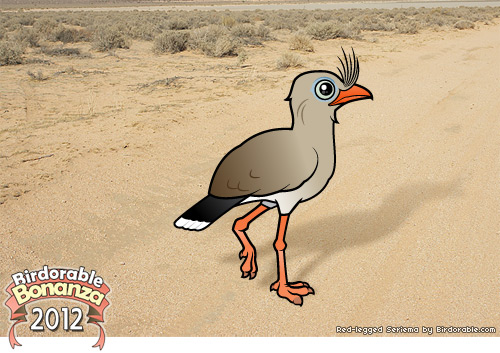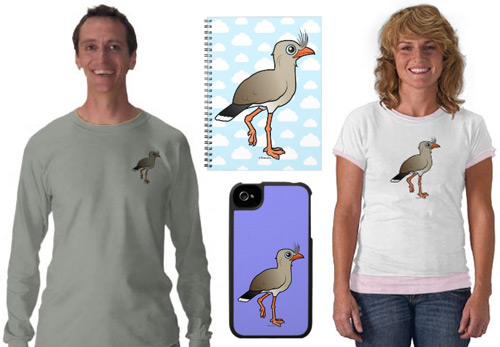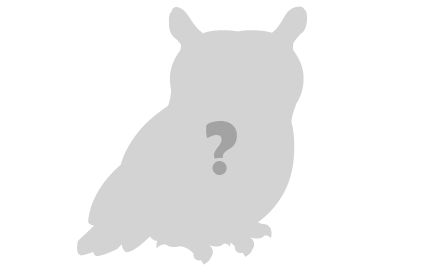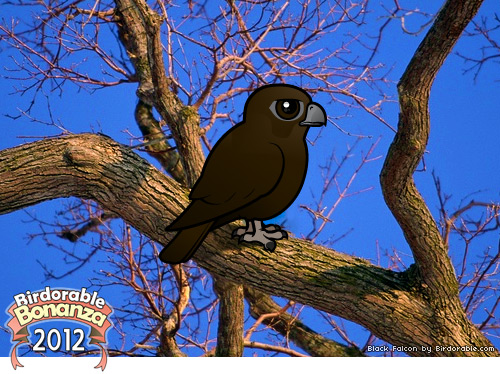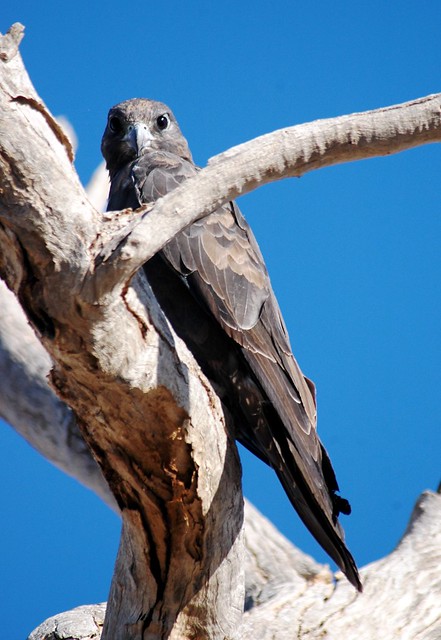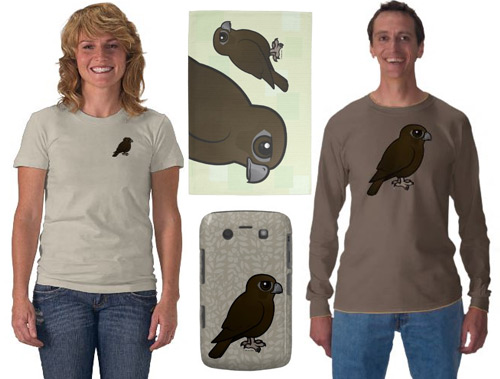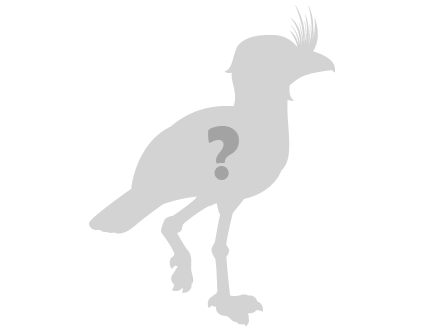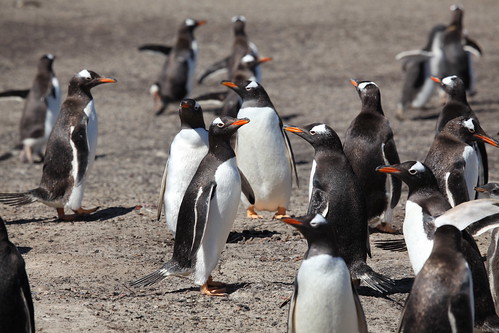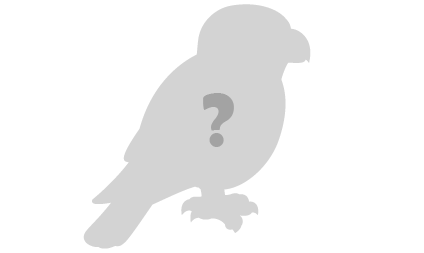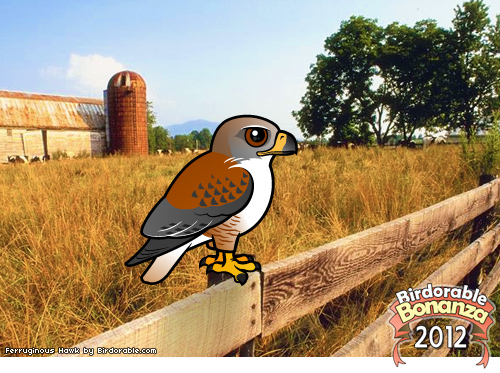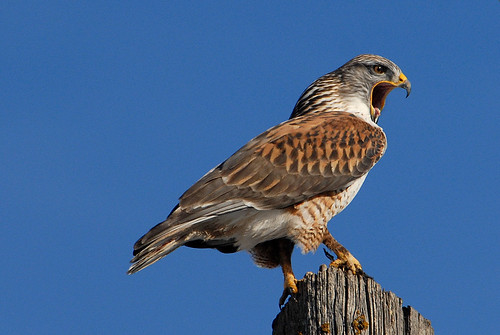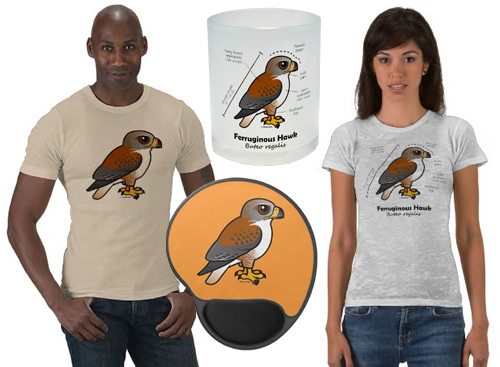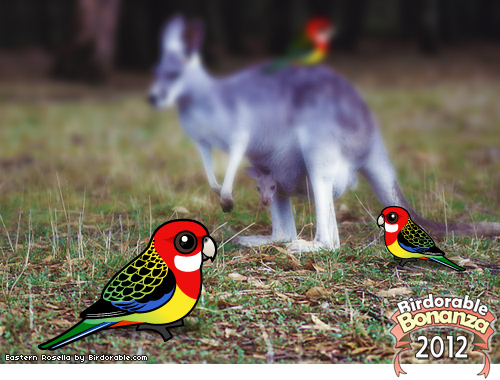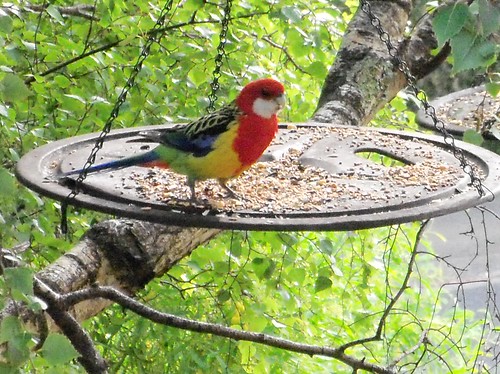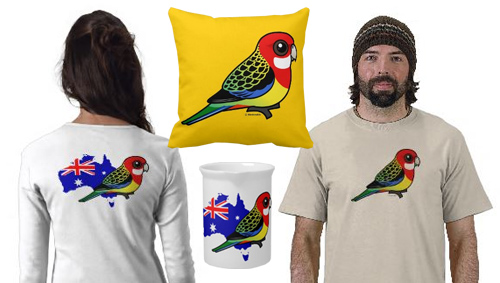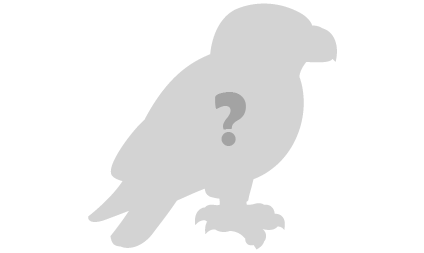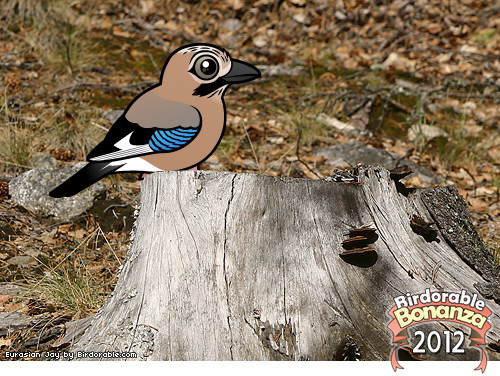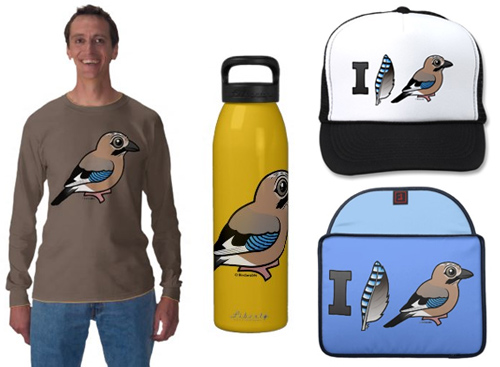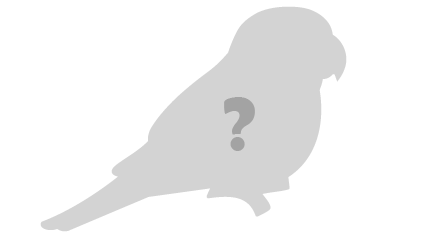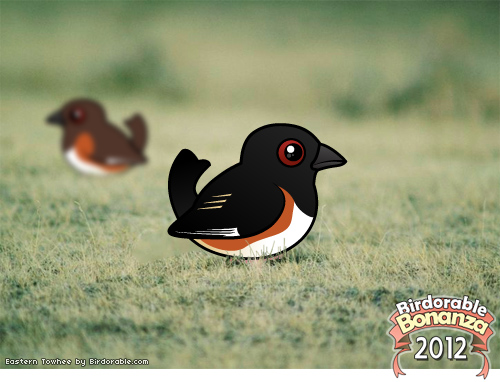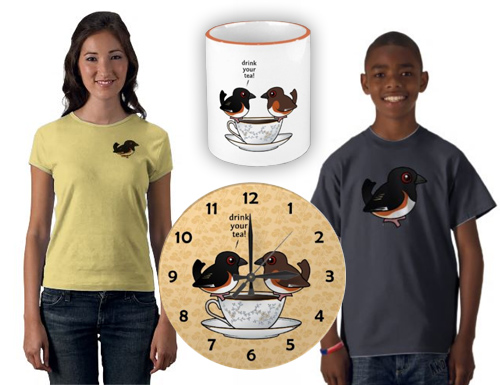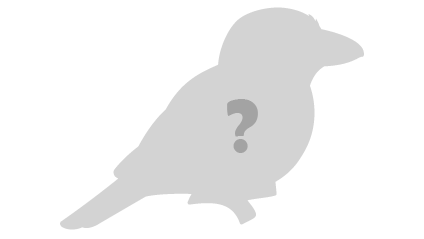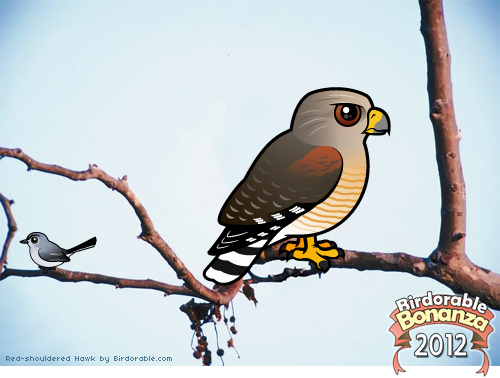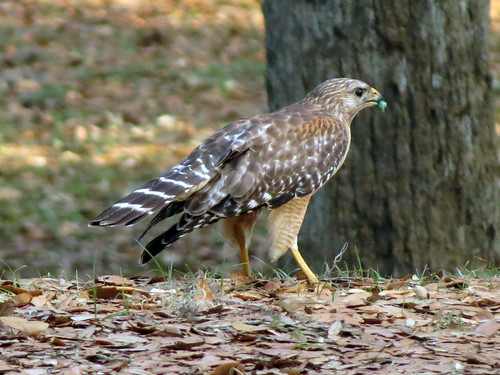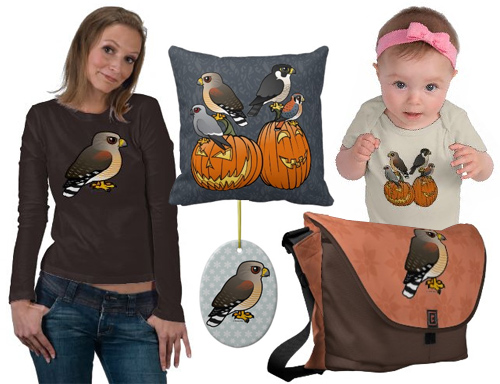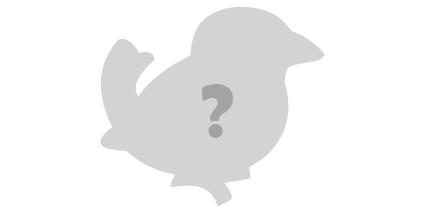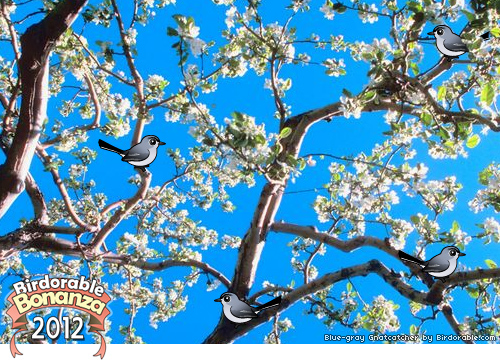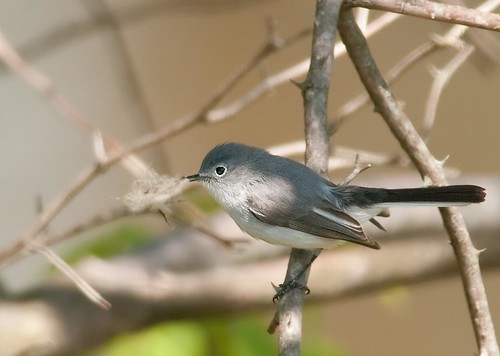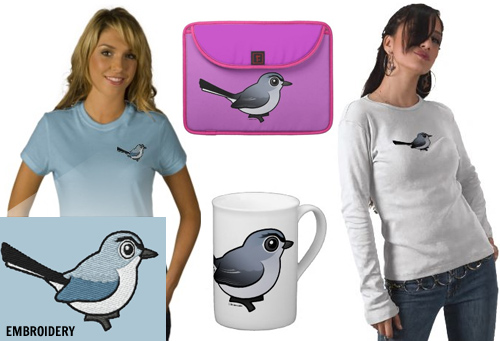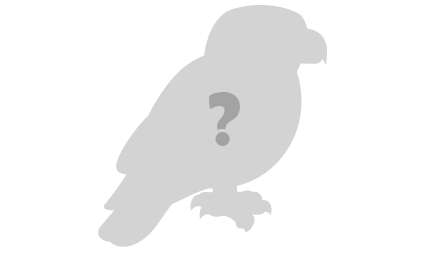Our Birdorable Bonanza 2012 concludes today as we reveal our 400th species: the Eurasian Eagle-Owl!
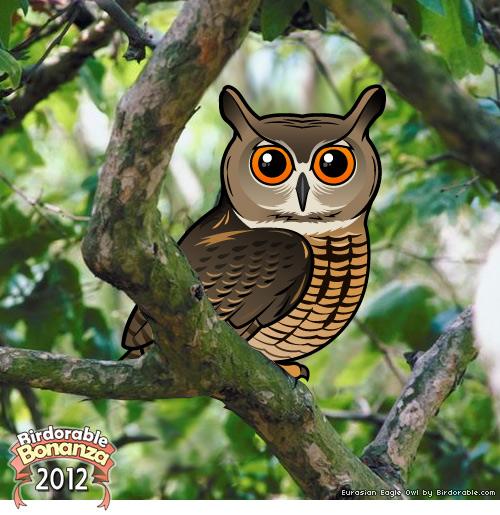
Eurasian Eagle-Owls are very large and powerful birds. They have beautiful cryptic plumage, prominent ear tufts, and striking bright orange eyes.

Eurasian Eagle Owl by cookipediachef
Did you know...?
- The Eurasian Eagle-Owl is sometimes considered to be the world's largest owl species. Their wingspan may be up to 6 and half feet or two meters!
- The scientific name for the Eurasian Eagle-Owl is Bubo bubo. Bubo is Latin for owl.
- This species has a very wide range, with breeding birds recorded in much of south and eastern Europe, and across much of temperate Asia.
- Eurasian Eagle-Owls eat a variety of prey, including mammals like voles and hares.
- Nesting usually occurs on rocky surfaces such as cave entrances, cliff ledges, or other crevices. They may also take over abandoned nests of other large raptor species.
- Like other owl species, the Eurasian Eagle-Owl achieves silent flight through a fringe-like edging across their primary wing feathers.
We've added a coloring page of this beautiful owl. Check out the Eurasian Eagle-Owl and other free PDF downloads here: Coloring Pages.
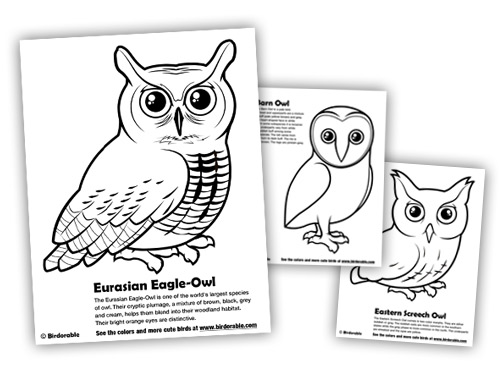
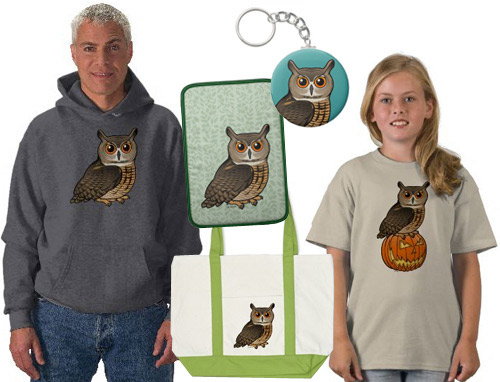
We hope you've enjoyed our Birdorable Bonanza 2012! We had a lot of fun introducing 22 new birds in 22 days and look forward to the next time! Here is a list of all the birds released during this Bonanza, in case you missed any of them.
- Rose-breasted Grosbeak
- Hawaiian Goose / Nene
- St Lucia Amazon
- Trumpeter Hornbill
- Golden-crowned Kinglet
- Northern Harrier
- Hawk-headed Parrot
- Palm-nut Vulture
- Eurasian Bullfinch
- Victoria Crowned Pigeon
- Magnolia Warbler
- Orange-winged Amazon
- Blue-gray Gnatcatcher
- Red-shouldered Hawk
- Eastern Towhee
- Eurasian Jay
- Eastern Rosella
- Ferruginous Hawk
- Gentoo Penguin
- Black Falcon
- Red-legged Seriema
- Eurasian Eagle Owl


